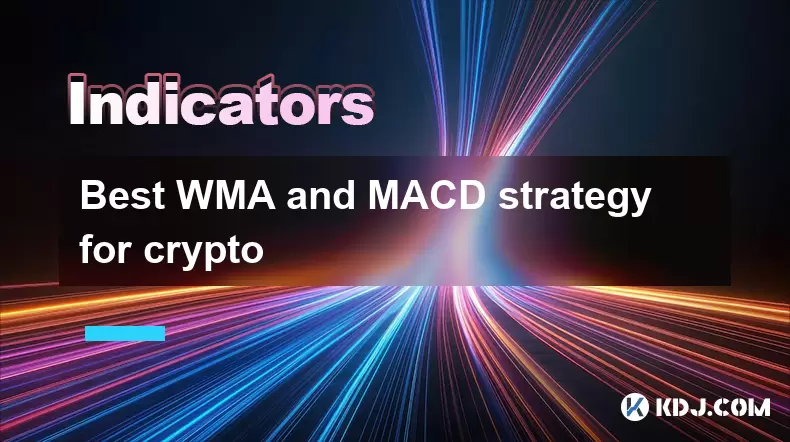-
 Bitcoin
Bitcoin $117,892.7399
-0.88% -
 Ethereum
Ethereum $3,436.0662
8.30% -
 XRP
XRP $3.2599
10.11% -
 Tether USDt
Tether USDt $1.0002
0.01% -
 BNB
BNB $717.3007
3.34% -
 Solana
Solana $176.4021
5.42% -
 USDC
USDC $0.9997
-0.02% -
 Dogecoin
Dogecoin $0.2159
6.54% -
 TRON
TRON $0.3116
3.64% -
 Cardano
Cardano $0.8084
7.68% -
 Hyperliquid
Hyperliquid $46.2989
-3.74% -
 Stellar
Stellar $0.4732
1.54% -
 Sui
Sui $4.0022
-0.66% -
 Chainlink
Chainlink $17.1611
3.71% -
 Hedera
Hedera $0.2461
3.30% -
 Bitcoin Cash
Bitcoin Cash $496.6743
-0.74% -
 Avalanche
Avalanche $22.9305
3.52% -
 Shiba Inu
Shiba Inu $0.0...01446
3.31% -
 UNUS SED LEO
UNUS SED LEO $8.8124
-0.07% -
 Toncoin
Toncoin $3.2407
4.13% -
 Litecoin
Litecoin $100.2127
2.57% -
 Polkadot
Polkadot $4.2312
2.34% -
 Monero
Monero $340.1485
1.97% -
 Pepe
Pepe $0.0...01370
3.49% -
 Uniswap
Uniswap $8.9383
-2.38% -
 Bitget Token
Bitget Token $4.7134
0.59% -
 Dai
Dai $0.9998
-0.04% -
 Ethena USDe
Ethena USDe $1.0003
-0.03% -
 Aave
Aave $323.6890
-1.90% -
 Bittensor
Bittensor $429.1624
-3.39%
Best WMA and MACD strategy for crypto
Combining WMA and MACD creates a powerful crypto trading strategy by aligning trend signals and momentum for more accurate entries and exits.
Jul 15, 2025 at 03:35 pm

Understanding WMA and MACD in Cryptocurrency Trading
In the world of cryptocurrency trading, technical analysis plays a vital role in identifying potential market trends and entry/exit points. Two commonly used indicators are WMA (Weighted Moving Average) and MACD (Moving Average Convergence Divergence). These tools help traders gauge momentum, trend strength, and possible reversal points. When combined effectively, they can form a powerful strategy for navigating the volatile crypto markets.
The WMA assigns greater weight to recent price data, making it more responsive to new information compared to simple moving averages. The MACD, on the other hand, is a trend-following momentum indicator that shows the relationship between two moving averages of a security’s price. Understanding how these indicators work individually sets the foundation for integrating them into a cohesive trading plan.
How WMA Enhances Signal Accuracy in Crypto Charts
One of the key advantages of using WMA in cryptocurrency charts is its sensitivity to recent price movements. This responsiveness allows traders to capture early signals of trend changes, which is especially valuable in fast-moving crypto markets.
- WMA calculation emphasizes newer prices, giving more relevance to current market sentiment.
- It helps filter out noise by smoothing price data without lagging too far behind actual price action.
- Traders often use multiple WMAs (e.g., 10-period and 30-period) to spot crossovers, which may indicate buy or sell opportunities.
When applied correctly, WMA can act as a dynamic support/resistance level, helping traders make informed decisions about entry and exit points based on real-time data.
Decoding MACD Signals in Volatile Crypto Markets
The MACD consists of three main components: the MACD line, the signal line, and the histogram. In cryptocurrency trading, where volatility can create rapid shifts in direction, understanding these elements becomes crucial.
- The MACD line is calculated by subtracting the 26-period EMA from the 12-period EMA.
- The signal line, typically a 9-period EMA of the MACD line, acts as a trigger for buy or sell decisions.
- The histogram represents the difference between the MACD line and the signal line, visually indicating momentum strength.
Traders look for crossovers between the MACD line and the signal line to identify bullish or bearish phases. Additionally, divergences between price and MACD can suggest potential reversals, offering strategic entry or exit points.
Combining WMA and MACD for a Robust Strategy
A successful strategy involves aligning both indicators to confirm trade setups. Here’s how to implement this:
- Use two WMA lines: one short-term (e.g., 10-period) and one medium-term (e.g., 30-period). A bullish signal occurs when the shorter WMA crosses above the longer one; a bearish signal appears when it crosses below.
- Overlay the MACD indicator on the chart. Look for confirmation through crossovers or divergence with the WMA signals.
- Only consider trades when both WMA and MACD align in direction. For instance, if WMA crossover suggests an uptrend and MACD line crosses above the signal line, it reinforces the buy signal.
- Set stop-loss levels near recent swing lows or highs depending on the trade direction to manage risk effectively.
This dual-filter approach helps reduce false signals and increases the probability of successful trades, particularly useful in the unpredictable nature of crypto assets.
Practical Steps to Apply WMA and MACD on Trading Platforms
Implementing this strategy requires precise setup on your trading platform. Here's how to configure it step-by-step:
- Open your preferred trading platform (e.g., Binance, TradingView, or KuCoin).
- Load the desired cryptocurrency pair (e.g., BTC/USDT or ETH/USDT).
- Add the WMA indicator and set the periods to 10 and 30. Customize colors for clarity (e.g., green for 10-period and red for 30-period).
- Add the MACD indicator with default settings (12, 26, 9), unless you have a specific preference.
- Adjust timeframes according to your trading style — intraday traders might prefer 15-minute or 1-hour charts, while swing traders may opt for 4-hour or daily charts.
- Monitor for confluence between WMA crossovers and MACD signals before entering a position.
By following these steps, traders can easily integrate this strategy into their existing workflow and improve decision-making accuracy.
Frequently Asked Questions
Q: Can I use WMA and MACD for all cryptocurrencies?
Yes, the WMA and MACD strategy is applicable across most liquid cryptocurrencies like Bitcoin, Ethereum, and altcoins with sufficient volume. However, low-volume or illiquid tokens may produce unreliable signals due to erratic price behavior.
Q: Should I adjust the WMA and MACD settings for different timeframes?
While the standard settings work well for general use, adjusting WMA periods and MACD parameters can enhance performance on specific timeframes. Shorter periods may be suitable for scalping, while longer ones suit positional trading.
Q: How do I handle conflicting signals between WMA and MACD?
If WMA and MACD give opposite signals, it’s best to wait for additional confirmation or skip the trade altogether. False signals are common in choppy or sideways markets, so patience is key.
Q: Is this strategy suitable for beginners?
This strategy is moderately advanced but can be learned by beginners with practice. Start by backtesting on historical charts and demo accounts before applying it to live trading.
Disclaimer:info@kdj.com
The information provided is not trading advice. kdj.com does not assume any responsibility for any investments made based on the information provided in this article. Cryptocurrencies are highly volatile and it is highly recommended that you invest with caution after thorough research!
If you believe that the content used on this website infringes your copyright, please contact us immediately (info@kdj.com) and we will delete it promptly.
- Trump, Meme Coins, and Tokens: A Wild Ride in Crypto
- 2025-07-17 18:50:12
- Ripple's EU Expansion: RLUSD Takes Center Stage, XRP's Role Defined
- 2025-07-17 18:30:12
- XRP Whale Alert: $73M Moved to Coinbase – Correction Incoming?
- 2025-07-17 19:10:14
- Sui (SUI), Mutuum Finance (MUTM), and DeFi Adoption: A Tale of Two Trajectories
- 2025-07-17 19:10:14
- Crypto Bills, ETH Surge, and Buybacks: Decoding the Latest Moves
- 2025-07-17 19:50:11
- Shiba Inu's ATH Ambitions: Can It Outpace the Competitors?
- 2025-07-17 18:30:12
Related knowledge

Advanced RSI strategies for crypto
Jul 13,2025 at 11:01am
Understanding the Basics of RSI in Cryptocurrency TradingThe Relative Strength Index (RSI) is a momentum oscillator used to measure the speed and chan...

Crypto RSI for day trading
Jul 12,2025 at 11:14am
Understanding RSI in the Context of Cryptocurrency TradingThe Relative Strength Index (RSI) is a momentum oscillator used to measure the speed and cha...

Crypto RSI for scalping
Jul 12,2025 at 11:00pm
Understanding RSI in the Context of Crypto TradingThe Relative Strength Index (RSI) is a momentum oscillator widely used by traders to measure the spe...

What does an RSI of 30 mean in crypto
Jul 15,2025 at 07:07pm
Understanding RSI in Cryptocurrency TradingRelative Strength Index (RSI) is a momentum oscillator widely used in cryptocurrency trading to measure the...

What does an RSI of 70 mean in crypto
Jul 13,2025 at 06:07pm
Understanding the RSI Indicator in Cryptocurrency TradingThe Relative Strength Index (RSI) is a widely used technical analysis tool that helps traders...

Does RSI work in a bear market for crypto
Jul 16,2025 at 01:36pm
Understanding RSI in Cryptocurrency TradingThe Relative Strength Index (RSI) is a momentum oscillator used by traders to measure the speed and change ...

Advanced RSI strategies for crypto
Jul 13,2025 at 11:01am
Understanding the Basics of RSI in Cryptocurrency TradingThe Relative Strength Index (RSI) is a momentum oscillator used to measure the speed and chan...

Crypto RSI for day trading
Jul 12,2025 at 11:14am
Understanding RSI in the Context of Cryptocurrency TradingThe Relative Strength Index (RSI) is a momentum oscillator used to measure the speed and cha...

Crypto RSI for scalping
Jul 12,2025 at 11:00pm
Understanding RSI in the Context of Crypto TradingThe Relative Strength Index (RSI) is a momentum oscillator widely used by traders to measure the spe...

What does an RSI of 30 mean in crypto
Jul 15,2025 at 07:07pm
Understanding RSI in Cryptocurrency TradingRelative Strength Index (RSI) is a momentum oscillator widely used in cryptocurrency trading to measure the...

What does an RSI of 70 mean in crypto
Jul 13,2025 at 06:07pm
Understanding the RSI Indicator in Cryptocurrency TradingThe Relative Strength Index (RSI) is a widely used technical analysis tool that helps traders...

Does RSI work in a bear market for crypto
Jul 16,2025 at 01:36pm
Understanding RSI in Cryptocurrency TradingThe Relative Strength Index (RSI) is a momentum oscillator used by traders to measure the speed and change ...
See all articles

























































































